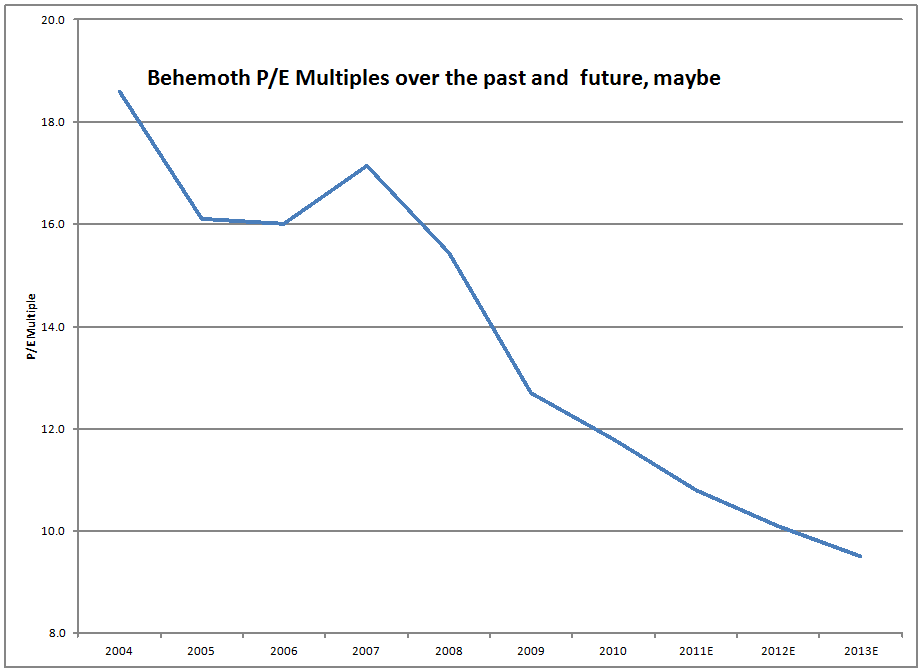Valuing Behemoths
There have been a lot of articles recently about how cheap the Behemoth stocks are — I define Behemoth stocks as those with over $100 Billion of market capitalization.? At the close on December 2nd, there were 39 of them that trade on US Stock exchanges.
It’s no secret that Behemoth stocks have underperformed.? One example of it comes from looking at the cap-weighted S&P 500 versus the equal-weighted S&P 500 over the last decade.? The larger cap stocks underperformed, particularly the financials, as they ballooned, and popped.
Here is a graph showing how the median P/Es of the current behemoths have declined, and may decline further, if prices don’t rise, but earnings do.
So why have the P/Es of the largest companies compressed? In an environment where low global growth is expected, the biggest companies have felt it most severely.? They are so big that they cannot compensate much for changes in global demand, as opposed to smaller companies that can try to tap markets that they haven’t tapped so far.
For Behemoth companies to achieve large earnings growth, they have to find monster-sized innovations to do so.? Those don’t come along too regularly.? Even for a company as creative as Apple (or Google), it becomes progressively more difficult to create products that will raise earnings by a high percentage quarter after quarter.
As a result it should not be a surprise that Behemoth stocks trade at discounts to the market when global growth prospects are poor.? They have more assets and free cash flow to put to work than is useful in a bad environment.? Not every environment offers large opportunities.
My clients and I own 7 of the 39 Behemoths (18% of assets).? When is it reasonable to own Behemoths?
It makes sense in a period where leverage is expanding, but that’s not now.? It also makes sense to own them when the earnings yield (E/P) exceeds the return on high-yield bonds by 3% or more.? In that case, like Buffett, we look at the stock like a bond, and look for growth in the book value per share to drive the growth in the price.
There is another value driver — I have a saying: “The equity always holds the capital structure option.”? For small companies, they can decide to merge or lever up.? For Behemoth companies they can decide to pay special dividends, buy back stock, or spin off or sell subsidiaries.
I don’t know that the Behemoth companies that I own will do this, but I expect at valuation levels like we are at today, where the prospective earnings yield is 9% or better, there will be enhancements to value and plenty of them.? After all, the Behemoths for the most part don’t face liquidity issues, and most of them have cash flow in excess of investment needs.
But the big payoff may come from Behemoths splitting into smaller companies.? Management abilities peak out after a certain level of asset value… it’s hard to manage Behemoth companies, unless the company is simple — energy companies can grow larger, because it is only a question of more geography.? There is no threat that they need to sell a different product.
As a result of all of this, we should pay much greater attention to how shareholder-friendly the Behemoths are.? Analyze the management teams, and see how willing they might be to take actions that will enrich shareholders.
Personally, I think almost all companies with market caps over $100 billion would perform better if they broke themselves into more logical pieces.


